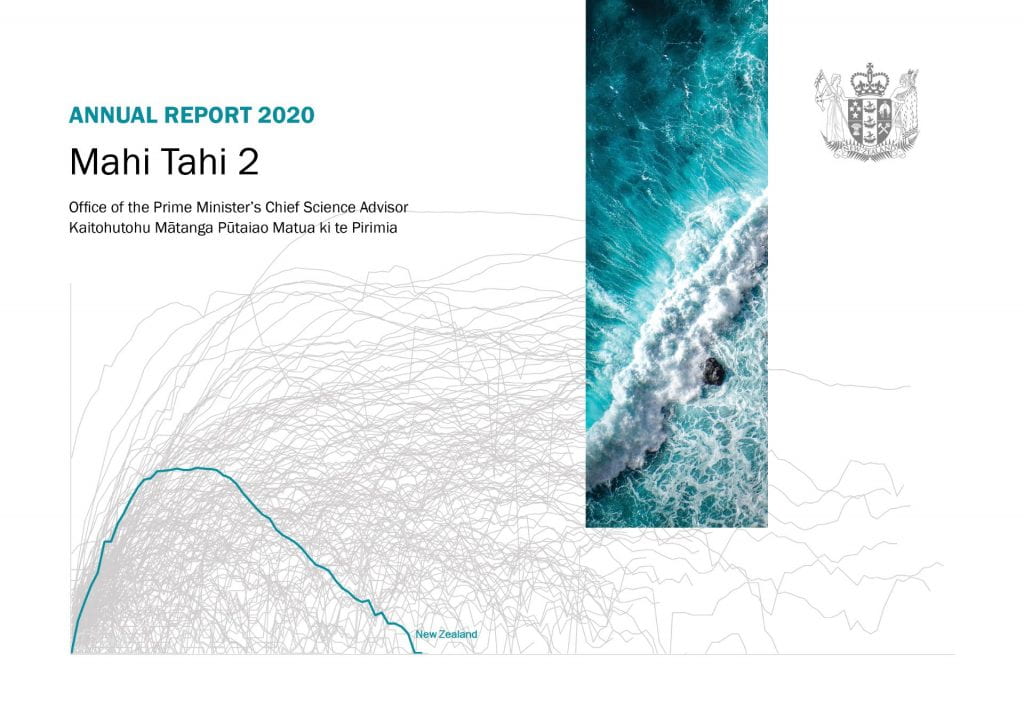Our second annual report, Mahi Tahi 2, is now at the printers. If you would like a hard copy, please get in touch.
Download Mahi Tahi 2 (PDF, 22MB)
Tēnā koutou katoa, ngā mihi o te wā ki a tātou.
Ahakoa ngā ārai, ahakoa ngā aupiki me ngā auheke, mā te āta wānanga me te mahi tahi e whai rongoā, e whai rautaki kia anga whakamua ai tātou katoa.
Kei te ao hurihuri tātou e noho nei engari mā te titiro ki ngā rā o mua me ngā kōrero o nehe, kei reira kitea ai he oranga mō tātou.
Nā reira, anei ētahi pitopito kōrero.
It is hard to know where to start when introducing our second annual report. Last year I described a whirlwind year, in which a lot of time was invested building a team and strengthening networks, visiting sites all over Aotearoa, and connecting with and listening to as many different communities as possible. This year we have drawn on those communities intensively as we have been asked for advice at a variety of different paces – in response to emergencies, to address public concerns, or to deliver detailed evidence syntheses to inform long-term policy. I am hugely proud of the way in which our scientists have stepped up and leant into unprecedented challenges. Ngā mihi nui e hoa. Thank you. In the pages to follow you will find a taste of our activity. Throughout, we stuck to our four principles: transparency, accessibility, inclusivity and rigour.
Mahi Tahi 2 began in July 2019 with a trip to the UK, Canada and the US to connect with their Chief Scientists and build relationships. This, and the strong trans-Tasman connection, proved vital this year as we faced a global pandemic. I also spent some time visiting different research communities in Aotearoa, reporting back in many cases on kōrero that I had begun the year before.
A big focus this year has been engagement with Māori researchers, and later in this report you can read about the fruits of this labour with more than 100 Māori researchers engaging in a series of hui. This culminated in a hui with the Hon Dr Megan Woods, Minister of Research, Science and Innovation, and senior MBIE officials, to share a common understanding of how the strengths of te ao Māori can be embraced within our research communities. It was heartening to see priority given to this kaupapa in the Budget this year. In my foreword to Mahi Tahi 1, I foreshadowed a long hard path ahead to build a working partnership around science advice that is truly bicultural. I hope that this year we have taken a few significant steps forward on this journey.
We delivered our first major report Rethinking plastics in Aotearoa New Zealand – the culmination of a long and detailed project ably led by Dr Rachel Chiaroni-Clarke from the Office, and with contributions from a hard-working and creative panel and a large number of stakeholders. The report was launched by the Prime Minister and the Hon Eugenie Sage, Associate Minister for the Environment, and the recommendations were well received, with a large amount of press interest. We are hugely grateful for the positive engagement and energy that this project created. We are particularly grateful for the parallel independent film project undertaken by Shirley Horrocks to create a short documentary on our plastics work (available on our website) and launched by the Governor General. We are continuing the collaboration this year and look forward to the next instalment.
The Prime Minister also asked us to put out some accessible public-facing explainers – one on 5G, and another on cannabis, ahead of the referendum. These are web-based and link through to trusted evidence, to enable anyone to access reliable details themselves, having read our non-technical summaries. We also worked on lots of smaller pieces of advice, some direct to the Prime Minister, such as our briefing on the Royal Society Te Apārangi’s report on genetic editing, and others behind the scenes, contributing to discussions with senior decision makers on hazard and risk, defence technologies and sensitive technologies.
Our next two projects arrived unexpectedly and under considerable urgency. As tragedy unfolded in the aftermath of the eruption of Whakaari White Island, I spent an intense week in and around the bunker supporting the amazing scientists from GNS Science to help the recovery efforts. And then of course, 2020 has been dominated by a long-predicted and yet still unexpected global pandemic, in the form of COVID-19. It has been an absolute privilege to work with Professor Ian Town, our Chief Science Advisor for health, to support our many excellent experts to provide science advice to the Prime Minister and Government, complementing the public health response.
Finally, an acknowledgement of the enormous support the office has received throughout the year from hundreds of scientists. I do not set myself up as the expert in all fields of science; rather as the pathway from the experts to the Prime Minister. This year that path has been well trodden. We have made a difference.
Ngā mihi nui


